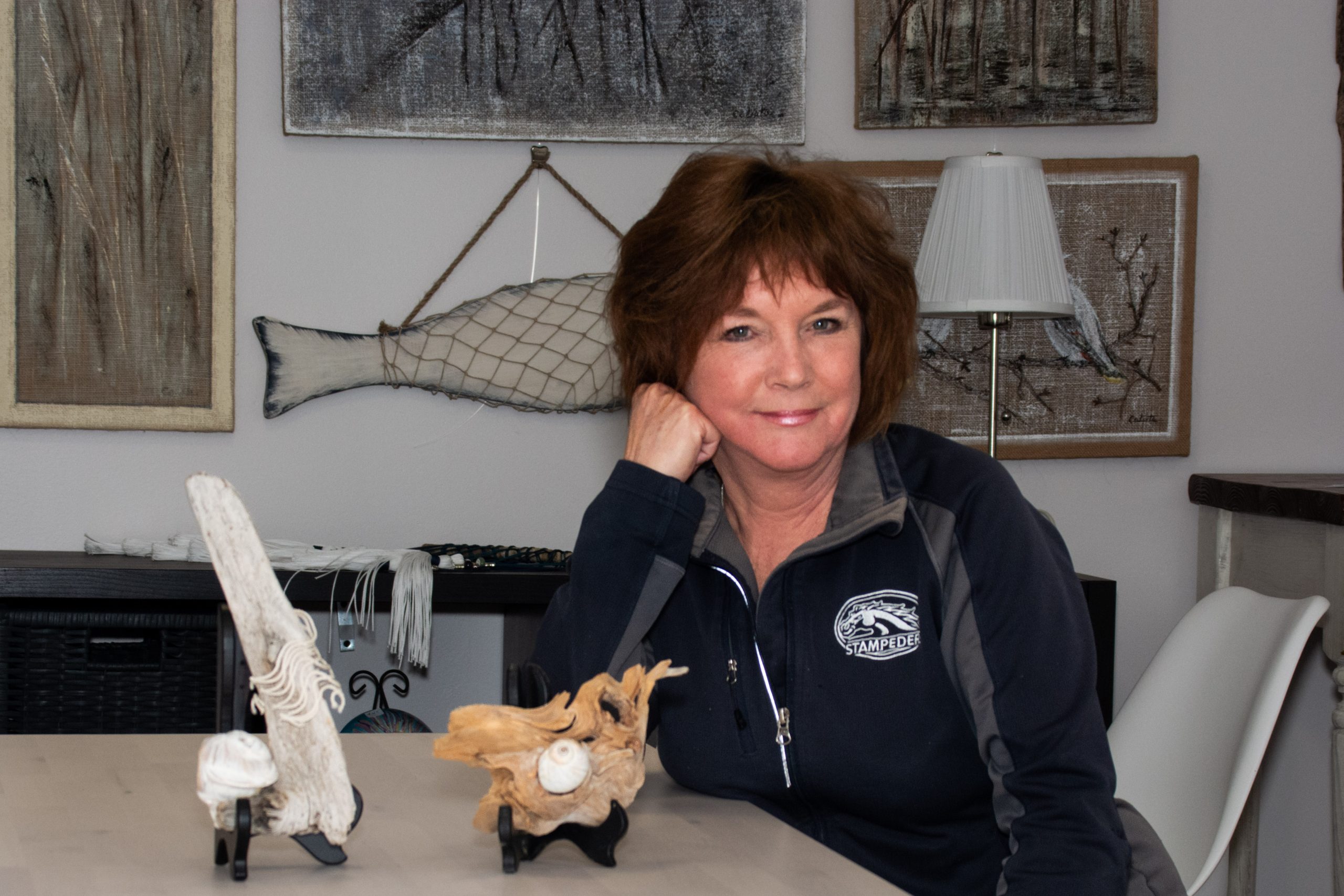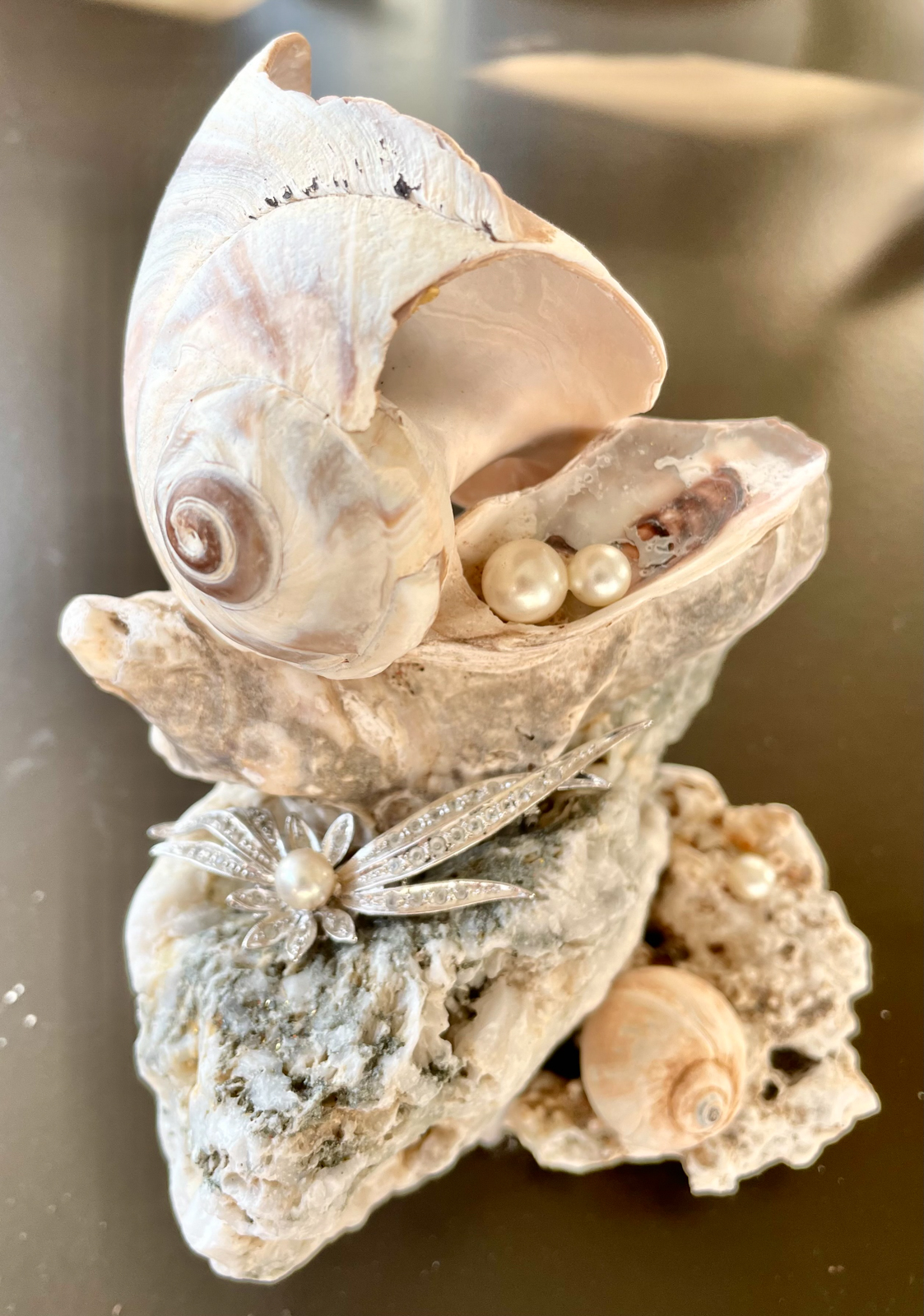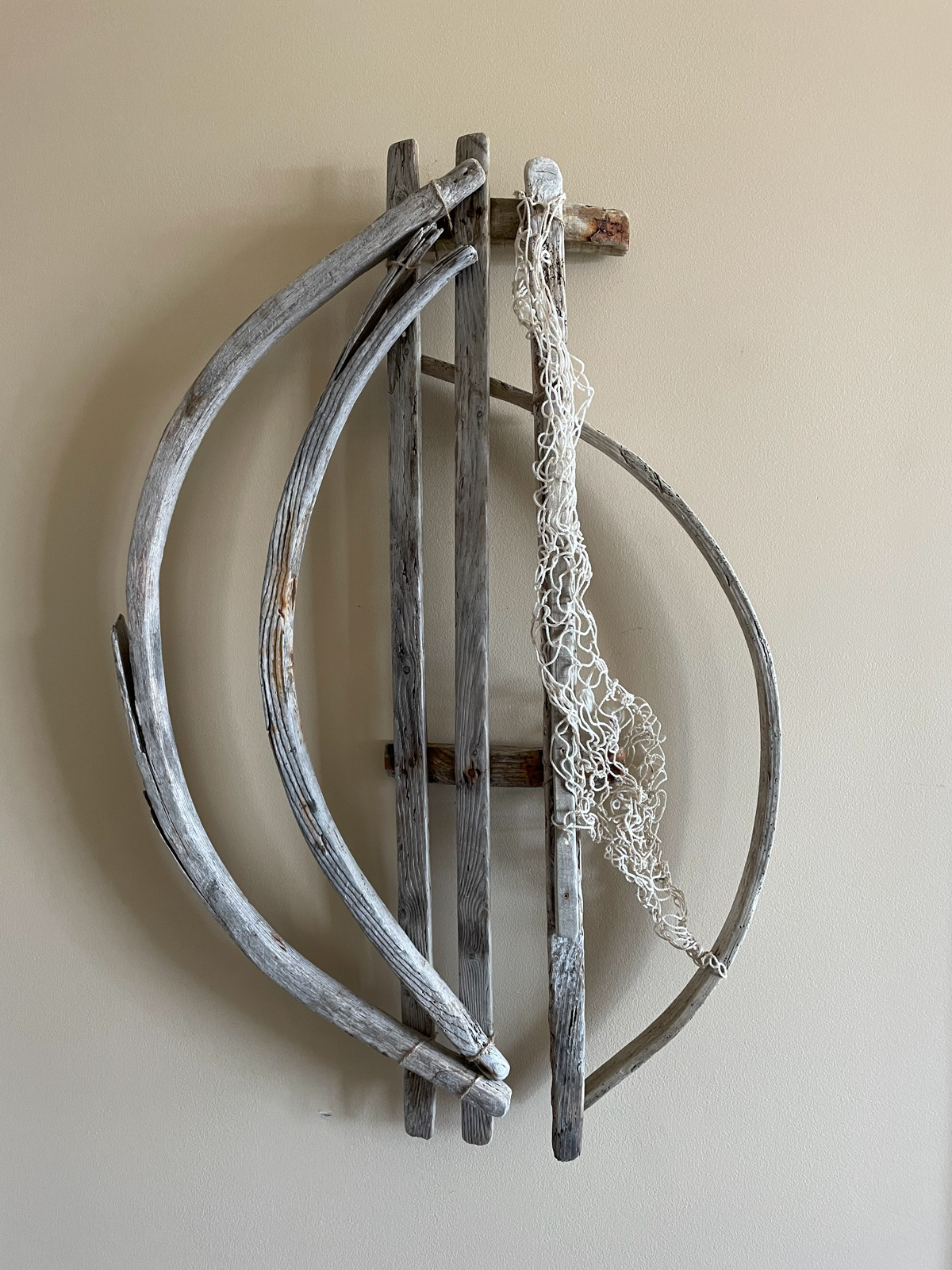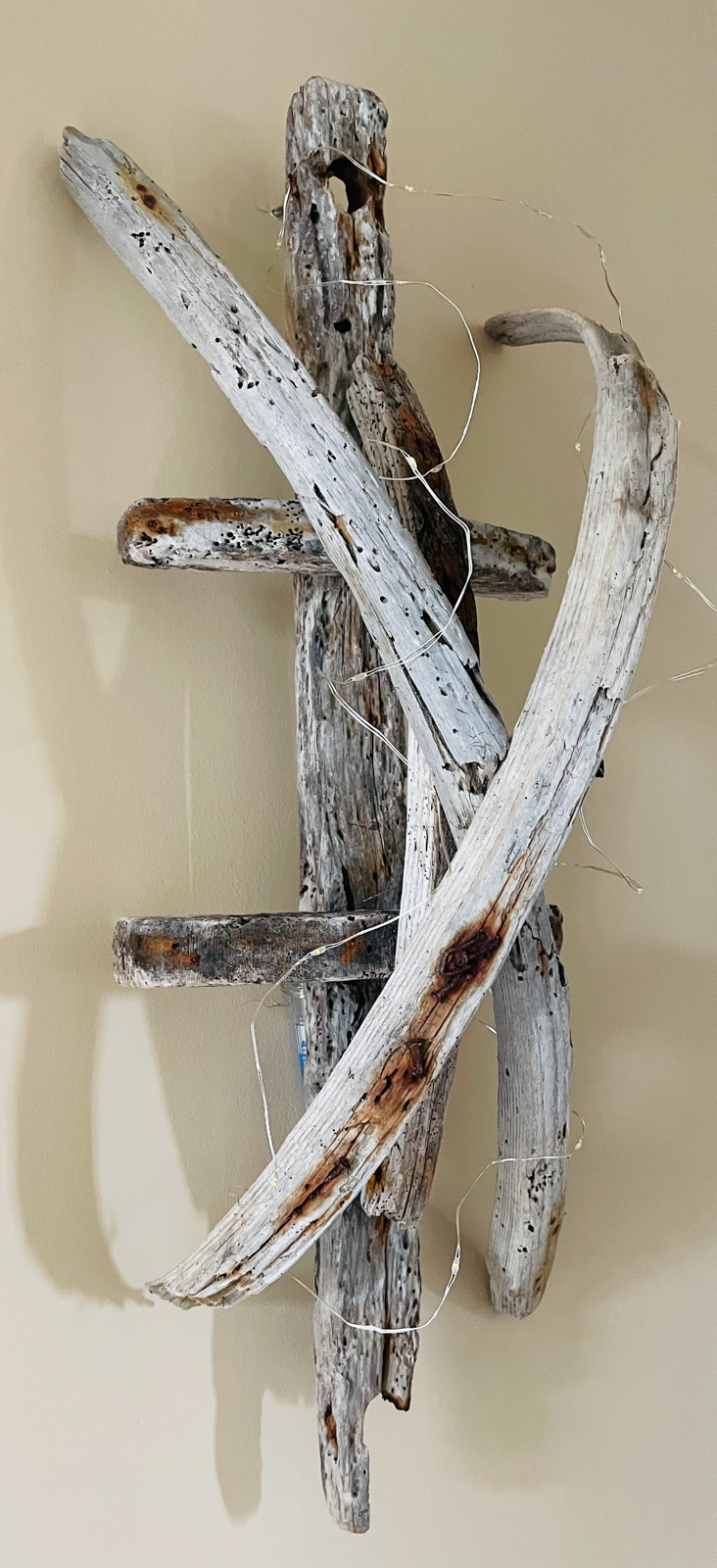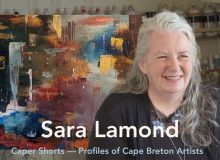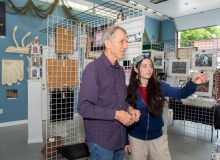Cynthia Curtis’s beachcombing sculptures
Cynthia Curtis makes wonderful sculptures from materials she finds on the beaches near her home in Rockdale in southern Cape Breton. What’s extraordinary, though, is the relationship she feels with those materials, the shells, the rocks and the driftwood, and, especially, with the manmade flotsam like scraps of fishing nets and the wooden lobster traps lost and smashed on the rocky seabed, the fragments flung up on the shore.
We met Cynthia at the Pepperell Place Inn Art Gallery in St Peters where some of her work is for sale. She’s a retired English teacher from Ontario who, with her partner, and through a series of unusual events around the COVID-19 pandemic, found themselves buying a house in Cape Breton. Before she moved here three years ago, she had not done any art to speak of other than some crafts for gifts.
Her house is within sight of the water and on walks along the beach she became enchanted with what the ocean had been tossing ashore. A lot of the stuff she was finding, she said, others thought of as trash. “But I thought they held such beauty.”
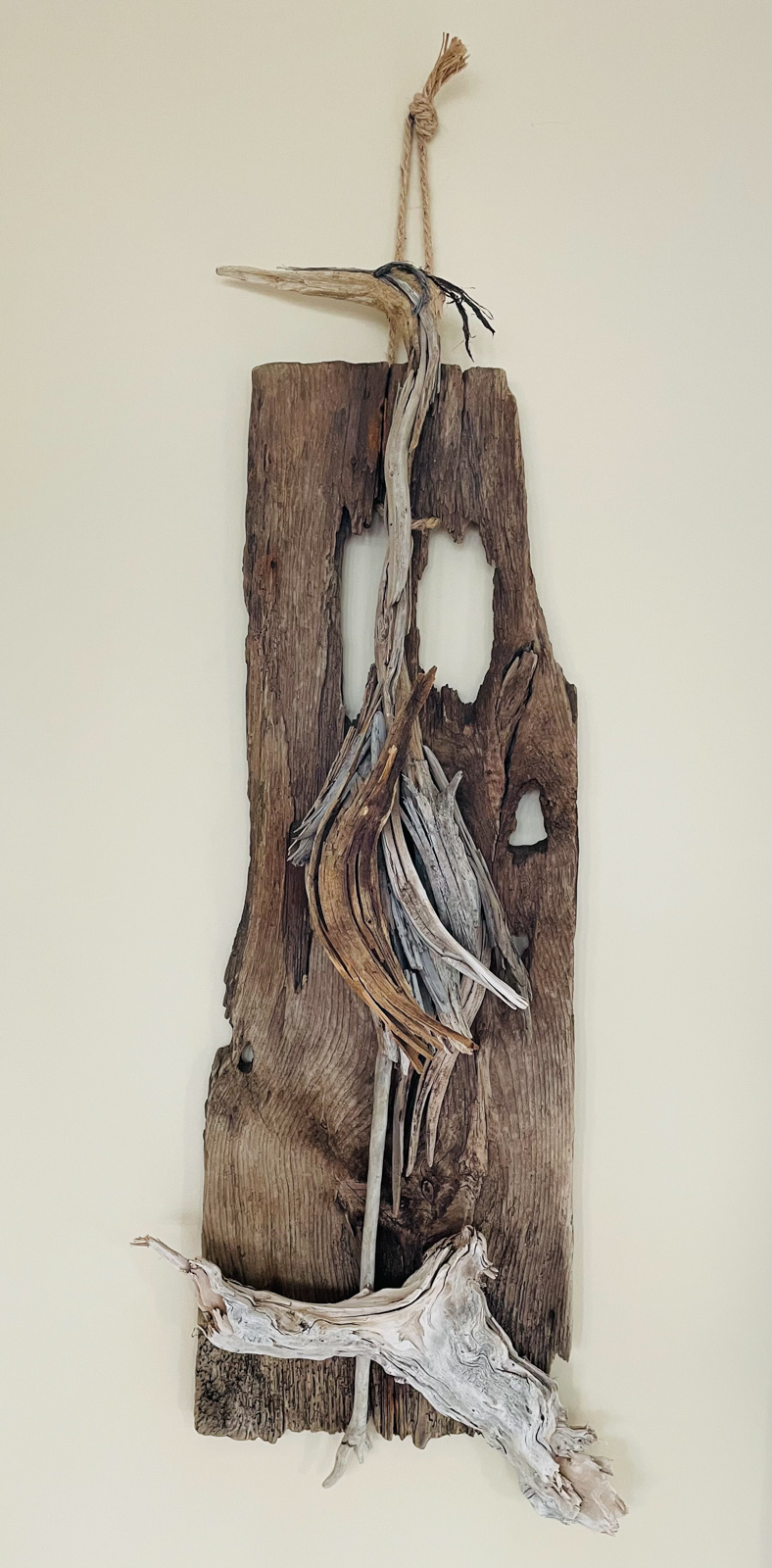
The Heron
And they do, especially with her eye for arrangement and juxtaposition, like a piece she calls The Heron. Using weather worn pieces of root and twigs on a background of perhaps a board from some seaside structure, worn down by tumbling on rocks, with holes in it, she created a heron that is as weathered as the beach where the real ones eke out their existence.
Then there is the piece I call the Picasse because it looks so much like the homemade anchors fishermen around here used to make. She had never heard of a picasse making it more delightful.
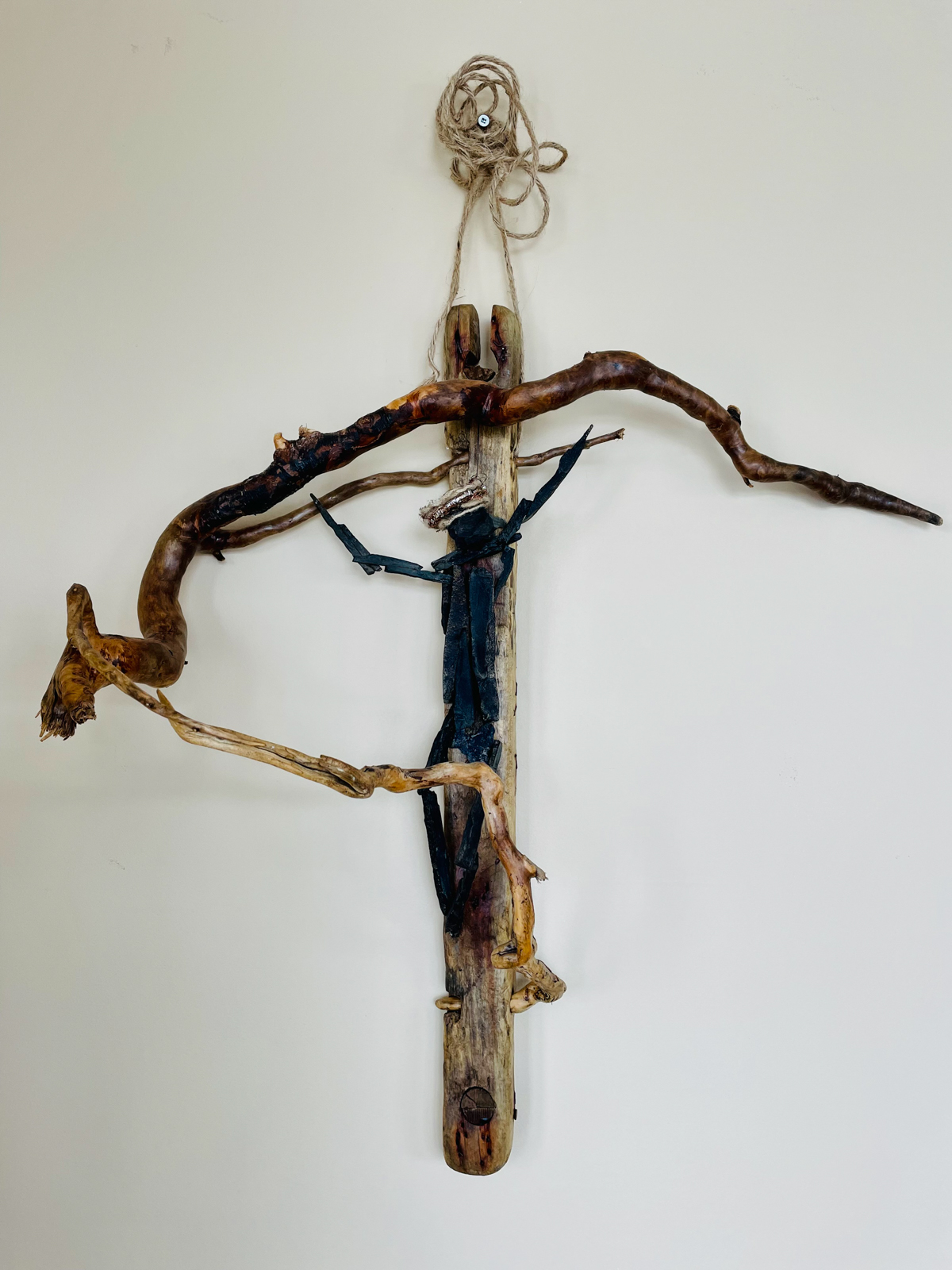
Crucified Christ
Then there is the Crucified Christ with a brooch for a crown woven in copper and jute. While that might sound blasphemous, in truth the whole inspires awe and deep mystery like the shroud of Turin might.
But it also looked like it might have been fun to make. She said of her process, “It’s a lot of playing around with things.” It’s also an adventure because when she starts, she has no preconceived idea of what she is making. She just wades into her piles of findings she has arranged in her basement and starts mixing, matching and arranging. Sometimes she includes jewellery because she likes the hard and shiny metal juxtaposed with the natural weather-worn materials.
“What takes the biggest amount of time is finding things with a similar patina.” she said. “It’s the time of collecting the right pieces that are going to look right together,” She wants the components of her sculptures to “look like pieces that could have been blown ashore together.”
Those who toil on the sea
What makes these sculptures Cape Breton art is the soul of her works, which is the power of the ocean and the people who made and used the materials first. “These traps were part of people’s lives,” she said. “I have the luxury of finding these things that these men and women toiled over and were a huge part of their lives, their heritage, everything.” In particular, about the lobster traps she said, “It’s the beauty of the ordinary linked to the history of the men and women who have tied the knots and who have hauled those traps from the water. How many times were they pulled and thrown back before being lost to the sea?”
Cynthia comes by her respect for those who make their living on the ocean partially from her own experience. She and her partner had plans once they retired to sell everything and literally sail away. They made it as far as Florida when a more formidable obstacle than the ocean hit, namely, COVID-19, and they had to tie up and find a home. The voyage was her first long-range experience but it had an impact. “It was challenging. Don’t let anyone tell you different. Some wonderful sights and experiences, but it’s not easy.” When she thinks about fishermen and women she says, “I know what it’s like to be on the ocean. It’s a soul-wrenching, soul-inspiring kind of thing.”
“If I were one of these fisher people I would want one of these pieces in my house.”

A few more sculptures
- Sea Sprite — From this angle, with its headdress, its arms spread out holding pearls and a brooch pinned to its skirt, it looks like some kind of sea sprite. Cynthia says she likes to add jewellery to some of her work because of the contrast. The sharp edges of the artifacts against the relentless weathering the shore objects are subjected to underscores what the latter endures.
- Treble Clef — Looking like some kind of archaic treble clef of music notation, the ribs bracketing a piece of trap wall has a solid balance, but the netting moves the attention forward like musical notes, or upward like bubbles made by some small sea creature.
- The Atomic Age — Reminiscent of the atomic structure, the curved ribs, for want of the right term, give the piece motion around a still centre which might be the door of a trap. Fairy lights wound through must create intriguing shadows in the dark.

Author details
Archie Nadon, writer and photographer, left Ontario in 76 dreaming of living by the sea. In 2021 it finally happened.
